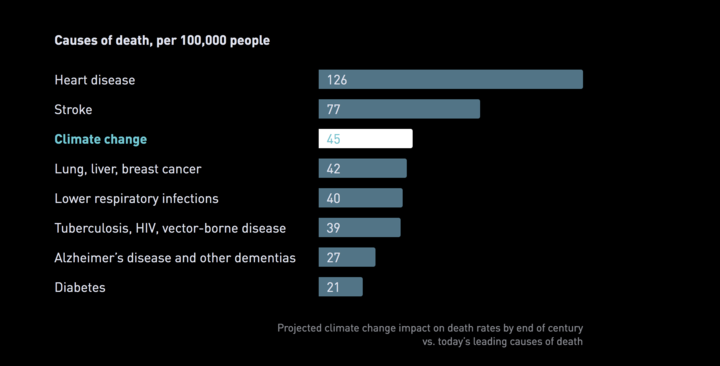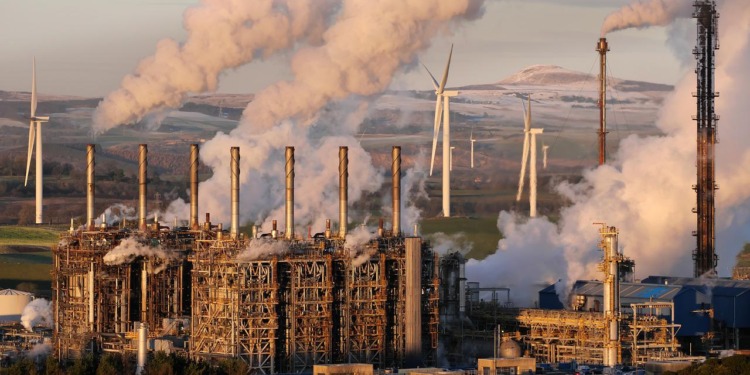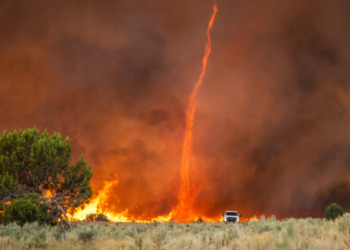Heat is an often-overlooked threat to public health. Increasing temperatures will worsen underlying conditions like high blood pressure and asthma, and especially affect people with lung problems, putting lives at risk.
“If left unchecked, climate change-driven heatwaves could become a leading cause of death by the end of the century,” warns the Climate Impact Lab after releasing its “Lives Saved Calculator” that measures how many lives could be saved from climate change-driven heat-related deaths if the U.S. takes meaningful climate action.
“Meaningful” is defined as either generating “Net-zero emissions,” which has the most significant impact on lives saved, or achieving “100% clean electricity,” which implies cutting out fossil fuels entirely in favour of renewables like solar and wind.
The Climate Impact Lab is a unique collaboration of over 30 scientists, economists, researchers, analysts and students from some of the US’ leading research institutions, including Berkeley, The University of Chicago, Rutgers University, and the Rhodium Group.
The researchers measure the economic and social costs of climate change and have now developed the first global, empirically-based model of the impact of climate-driven changes in temperatures on human mortality rates, which they call the “Lives Saved Calculator.”

What is it and how does it work?
The Climate Impact Lab’s new “Lives Saved Calculator” is a powerful new online tool that allows users to estimate the worldwide effect of local, state or national climate policies in the US, modelling avoided mortality and adaptation costs if emissions-cutting and clean energy targets are met.
In other words, it quantifies global benefits of both national and local policies, demonstrating tangible impact each emission cut can have.
Users can input locations to see how policies there could help avoid climate change-related temperature increases and thereby deter heat-related deaths globally, helping to estimate the impact of climate change on mortality in low-and middle-income countries.
The tool borrows from the methodology behind new research in The Quarterly Journal of Economics on relationships between temperature and mortality. The Lives Saved Calculator quantifies the mortality impact of state-level goals for decarbonising electricity, relying on the US Energy Information Administration’s latest Annual Energy Outlook to determine which states have policy mandates for 100% clean electricity by 2050 or earlier.
Future emissions depend on a range of factors, including the pace of global economic and population growth, technological development, and policy decisions, which are difficult to predict.
Key findings: Taking action on emissions saves lives and money
The research’s key finding is that millions of lives globally will be saved, or lost, depending on whether America manages to propel itself towards a future without planet heating emissions.
The U.S., Climate Impact Lab finds, could save 7.4m lives globally by 2100 if it achieves carbon neutrality by 2050. In fact, just 10 U.S. states could save 3.7 million lives worldwide by cutting their emissions to net zero by 2050.
The financial savings would also be huge. By achieving net zero emissions by 2050, America could save the world $3.7tn in costs of adapting to rising heat, and dealing with extreme weather events caused by climate change.
This is the first time that researchers have figured out exactly how many lives and how much money could be saved by the U.S. climate action, and the findings reflect the urgency of the nation passing significant climate legislation.
As the world’s second-largest emitter of greenhouse gases, the U.S. plays a crucial role in people in other countries around the globe being subjected to deadly heat and weather events.
When it comes to clean electricity, the Climate Impact Lab estimates that the US could save 1.6million lives and avoid $742.2 billion in adaptation costs globally through 2100 by switching completely to clean electricity.
Left unchecked, by the end of the century, climate change-driven heatwaves could become a leading cause of death. How will achieving 100% clean electricity in your city or your state improve outcomes? Share what you've found on the Lives Saved Calculator: https://t.co/qcRfmJKzk5
— Climate Impact Lab (@impact_lab) June 8, 2022
Even states that are already high climate achievers such as Washington, with a renewable energy share of 83.3% in 2020, would save 21,263 lives globally by 2100 if this were 100% renewable by 2050. States with low proportions of renewable energies, such as West Virginia (5.5% share in 2020), could save 22,595 lives.
In terms of net-zero emissions, this data was particularly remarkable for states with large populations and fossil fuel consumption. California, which emitted 340m metric tons of CO2 in 2021, could save 508,123 lives by 2100 if it achieves net zero by 2050. Texas, which emitted 766m metric tons of CO2 in 2021, could save 1,086,957 lives by 2100 if it did the same.
These statistics, however, only consider deaths from climate change-driven temperature increases – the true toll of climate inaction, including deaths from extreme weather events, would be even higher.
The uneven impacts of climate change
The map shows that not everyone will be impacted equally by climate change, and that climate change related deaths will vary significantly between countries by the end of the century.
With more frequent and intense heat waves, more people will die in the warmer areas, such as North and West Africa or South Asia, which are home to large parts of the world’s population. Death rates will decline in cooler countries that will warm to a lesser extent.
Rising heat will thus cause a globally uneven distribution of deaths this century.
The recent heatwave in India and Pakistan is one such example: An extreme weather event that killed hundreds and was made 30 times more likely by the climate crisis.
Hannah Hess, associate director at the research group Rhodium, a part of the Climate Impact Lab consortium that conducted the study, said on the matter
“People have different abilities to adapt depending on the resources they have to protect themselves from extreme heat. The hottest places don’t all face equally elevated risk of death; it’s closely tied to economic growth. Within the U.S., there are impacts in places like southern California and Texas, but the U.S. is really eclipsed by poorer regions of the world when it comes to these sorts of deaths.”
As the world grows richer and hotter, a growing share of populations will have the resources, like air conditioning, to reduce the health threat posed by heat. But vulnerable populations could be excluded, and there is no denying that climate change adaptation will be very expensive.
In 2100, around 4% of the global economic output will need to be spent on death prevention.
The findings put pressure on the U.S. to do more
The “Lives Saved” calculator is an accessible means of understanding the cost of inaction that makes it painfully clear that the U.S. has failed to pass meaningful legislation to tackle the climate crisis.
President Joe Biden’s Build Back Better bill, which included around $555bn on climate spending and aimed to achieve net-zero GHG emissions by 2050, was halted in the Senate earlier this year by Republican opposition and pro-fossil fuel Democrat Senator Joe Manchin.
Without the bill, Biden seems to have no clear plan to achieve his target, and judging by his climate critics, the his administration’s climate legacy is disappointing so far. Unfortunately, the approaching midterm elections make passage even more unlikely, as the Democrats may lose their Congress majority.
Meanwhile fears over inflation and the Ukraine war impact have likely also overshadowed the urgency of climate legislation.
Regardless, the IPCC 2022 Report states that emissions must peak “at the latest before 2025” to meet Paris Agreement targets, which is especially important for large emitters such as the U.S. Failure of the US to pass any legislation would leave the world open to catastrophic climate impacts.
Although shocking, Climate Impact Lab’s exact modelling of how emissions impact global temperatures and livelihoods could hopefully encourage the U.S. public and policymakers to push for the legislation needed.
Editor’s Note: The opinions expressed here by Impakter.com columnists are their own, not those of Impakter.com. — In the Featured Photo: Industrial Petroleum Chimneys. Featured Photo Credit: Pixabay.









